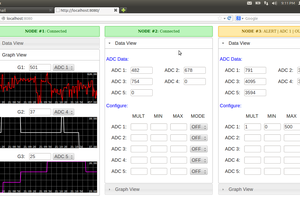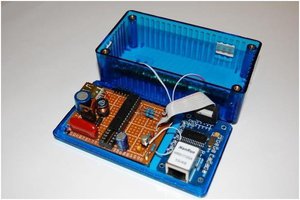Features
- The 32x24 thermal frames, taken with the MLX90640 sensor, are streamed by ESP8266 to HTML5 capable web clients, where the frames are interpolated and shown on web UI;
- The frame sequence, accumulated in web browser memory, can be saved as a file for later playing back and analyzing;
- Web UI allows setting of up to 10 points for monitoring the temperature of any of the existing 768 points of the thermal picture, those points are persisted in file along with the thermal frames;
- Wi-Fi connection (e.g. AP configuring, or connecting to the existing Wi-Fi network) can be configured through the Web interface;
- Everything needed for streaming thermal data and showing it on browser is hosted on ESP8266 HTTP server locally, so no Internet required;
- There is a built-in IDE for editing the software through Web interface (useful if there is a plenty of space left on ESP flash file system);
- Up to 3 simultanious web sessions are allowed to receive a stream of thermal frames. If fourth client connects, the server removes the oldest web client recepient. The maximum amount of simultanious client sessions may be later increased if the code is executed on more powerful NodeMCU hardware, e.g. ESP32 (not checked yet).
Follow the following link to play back pre-recorded thermal data.
 dev-lab
dev-lab








 EmericB
EmericB
 Jaspreet Singh
Jaspreet Singh
 Zachary Murtishi
Zachary Murtishi
i have a camera module MLX90640 only with scl connection. how can you connect it?
dirk